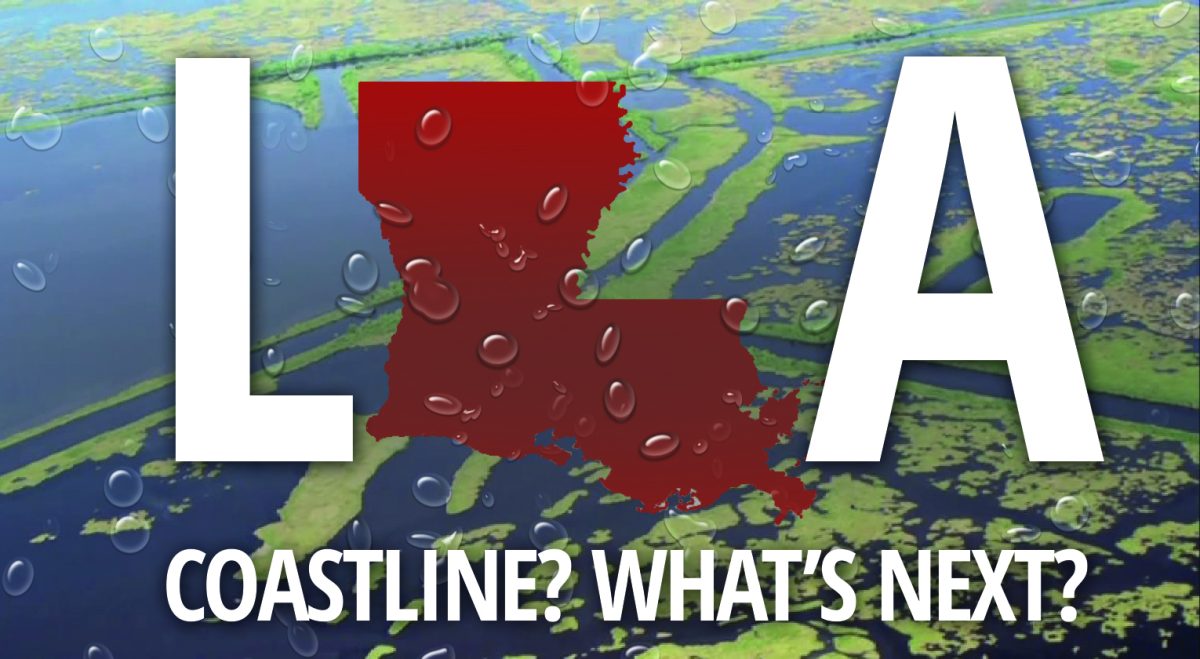This April, Louisiana Governor John Bel Edwards declared a state of emergency, calling attention to our deteriorating coastline. “If we get heavier than expected rainfall, time will be of the essence,” Edwards warns.
Every year, Louisiana crosses its fingers through an unpredictable hurricane season with tropical storms threatening to flood the south. The coast, which consists of the swamps and marshes we call wetlands, is the first area to suffer.
According to coastal reporter Travis Lux, the coast loses roughly one football field of wetland every hour, quickly becoming “the nation’s most rapidly deteriorating shoreline.”
These wetlands are responsible for much of Louisiana’s commercial fishing and 20 percent of the country’s maritime commerce. The problem is growing to be increasingly severe and is taking a toll on our economy and the two million southerners who work and live there.
While erosion is a naturally occurring phenomenon, it has also been provoked by man’s interference with nature. As a result of climate change, the world’s ice caps have been melting and causing sea levels to rise. That water needs a place to go, and can seemingly be found right on campus at Scott’s Bluff.
“[ . . . ] frozen ice thawing into the Mississippi River makes the river higher for a couple of months, and over time the water goes down, creating that nice little fishing spot down by the Bluff,” sophomore music education major, Dale Whitley, explains.
Southern University has been situated along the Mississippi at Scott’s Bluff for more than one hundred years. Here, students visit to eat, fish, take pictures, or to simply enjoy the scenery.
Similarly, mankind has contributed to coastal erosion with Louisiana’s system of levees, locks, and dams. Not only do they prevent the flow of floodwater, they also prevent the accumulation of sediment from the Mississippi River, which would otherwise counteract erosion. Reversal of this would call for the destruction of even more land and levees. Even if man had never gotten involved, erosion has been expedited for decades because of hurricane and tropical storm activity.
In essence, coastal erosion is a silent killer feeding on Louisiana wetlands. “If we want this to stop or slow down, we need to address global warming. Littering, smoking — all that makes it worse even if we don’t see it happening,” suggests sophomore Biology major, Devin Ross.
Nearly half of Louisiana’s population resides on its coast, witnessing first hand, the extent of land loss. Many of these homes and businesses are drowning and families are forced to relocate.
Louisiana’s coast spans roughly 397 miles, still home to many more communities that were not fortunate enough to have moving covered — a problem that restoration efforts aim to tackle.
After Hurricanes Katrina and Rita ripped through the south in 2005, the Coastal Protection and Restoration Authority (CPRA) took initiative in drafting plans for coastal restoration and reconstruction.
The master plan currently outlines a $50 billion fifty-year plan, largely funded by settlement monies from the Deepwater Horizon oil spill in 2010.
CPRA’s efforts will entail the rebuilding of marshes and barrier islands, further construction of levees, elevation of homes, and additional flood protection for businesses.
According to the New Orleans Times Picayune, thirty projects are expected to begin in the 2018 fiscal year.
Categories:
Louisiana is Drowning: Coastal Erosion a Growing Concern
October 31, 2017
Louisiana is Drowning: Coastal Erosion a Growing Concern
0
More to Discover






